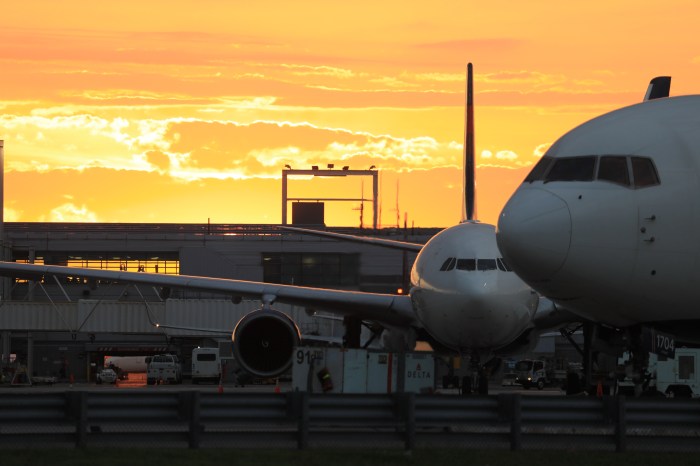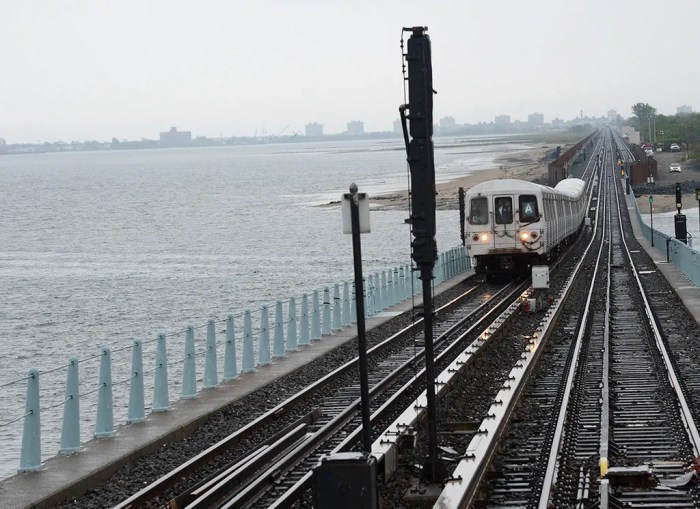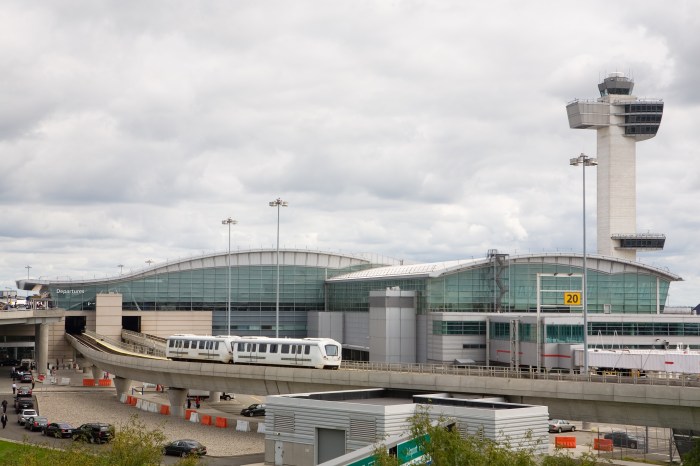By Joshua Centor
Along with 400 other men and women, I am waiting to hear if I made the cut to become a ballperson at next month’s U.S. Open in Flushing Meadows Corona Park. Those of us chosen to participate in the Grand Slam tennis event will be notified later this week.
As I filled in my registration card and addressed an envelope, I saw another member of the media who also was trying to become a rookie ballperson. Kenny Mayne, the popular anchor of ESPN’s Sportscenter, was trying to make the cut as well at the July 11 tryouts.
“I’m very serious about my tryout,” Mayne said. “Being here is better than working the 6 p.m. Sportscenter. This is a great event. The scene is incredible. It would be a thrill to do it.”
Mayne did go through a regular tryout, but offered that he was “going to screw around so much after, they wouldn’t keep me.”
Although Mayne may have Sportscenter obligations, my schedule is strikingly empty near the end of August, so I was nervous and excited about the prospects of my tryout. These sentiments were felt throughout the tennis center.
“This is a great experience,” said Amir Bar, 15. “I’m excited. I’m sure it’s going to be fun.”
Hudi Miller, 16, agreed with his friend. “I’m not really nervous. I expect a lot of running and throwing. It will be fun.”
There are two different court positions for which ballpeople can try out, net and backcourt.
“Speed is more important for the net position,” said Tim Curry, publicity manager for the USTA. “A strong arm is needed for the backcourt.”
Potential ballpeople can try out for either or both positions. Those selected to work in the backcourt must be ready to make a long throw — the U.S. Open is the only Grand Slam tournament where it is required for ballpeople to throw the ball across the court rather than to roll it.
Since my feet only move quickly when there is food on the dining room table, I decided to try out for the backcourt position, where I could sit back and trust my arm to make the long throw across the court. Other potential ballpeople had other reasons for trying out in the backcourt.
“There is more action in the backcourt,” said Mike Halpern, 35, who came up from Philadelphia to try and make the cut in the backcourt for the second time. Halpern had been a ballboy in the 1990 U.S. Open when he was only 23 years old.
“I don’t like the net,” he said. “There is more communication with the players in the backcourt. Working the net is a pain in the butt with bending down all the time.”
Halpern and I were paired off as throwing partners during the tryouts. We were given eight throws each down the sides of the court and then four across diagonally. Halpern thought we had a pretty decent shot at being on the court when the tournament begins.
“I don’t think we have much to worry about,” he said.
When I asked him why he came all the way from Philadelphia for tryouts, he simply answered, “This is the Super Bowl of tennis. It’s time for me to go again.”
The U.S. Open begins its qualifying tournaments with approximately 270 ballpeople with a little more than a third of them being first-year participants.
“Seventy to 75 rookies will be chosen to work the tournament,” said Alex Stravato of the USTA publicity department. “Mostly veterans will work the later rounds.”
One veteran, Laurence Knobel, 16, of Bayside, had a great experience when he worked the tournament last summer.
“It’s a lot of fun,” Knobel said. “You meet a lot of people and a lot of the players. I’ll definitely do it for a few more years.”
Many of the veteran ballpeople I encountered were quick to name some of the more famous players’ matches they had been chosen to work.
“I was in a ball pit at a Martina Hingis match last year,” Knobel said. “I was handing the balls to the people on the court.”
Although Halpern hasn’t worked an Open in 12 years, he clearly remembers some of those 1990 matches.
“I worked a match for two-time French Open champion Sergei Brugera,” Halpern said. “And that year, Jim Courier and Pete Sampras were a doubles team and I did their match. They lost.”
Working on the courts with the best players is not the only reason to become a ballpeople. It is a paid position. First-year ballpersons earn minimum wage. Veterans earn more.
“I’ll get $7.75 an hour,” Knobel said.
There is no age limit to become a ballperson. In 1999, Manny Herschkowitz, then 82, worked a singles match at the Open. Although Herschkowitz wasn’t at this year’s tryouts, there will be men and women of all ages patrolling the courts.
I am hopeful that I will be one of the 75 rookies selected to work the tournament. Whether I make the cut or not, being part of the 2002 U.S. Open ballperson tryouts was quite an experience.
Reach contributing writer Joshua Centor by e-mail at TimesLedger@aol.com or call 229-0300, Ext. 130.


































